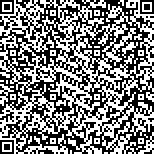彭娟,杨仕彬,李爱玲,蹇睿,李卫平,陈波,虞记华,胥方元.镜像疗法改善脑卒中偏瘫患者上肢功能障碍的Meta分析[J].中华物理医学与康复杂志,2018,40(11):844-853
扫码阅读全文

|
| 镜像疗法改善脑卒中偏瘫患者上肢功能障碍的Meta分析 |
|
| |
| DOI: |
| 中文关键词: 镜像疗法 脑卒中 上肢功能 随机对照试验 荟萃分析 |
| 英文关键词: Mirror therapy Stroke Upper limb function Meta-analyses |
| 基金项目:四川省科技厅课题(10,LY-89);西南医科大学附属医院课题(17166) |
|
| 摘要点击次数: 7513 |
| 全文下载次数: 7329 |
| 中文摘要: |
| 目的 系统评价镜像疗法改善脑卒中偏瘫患者上肢功能障碍、日常生活能力及疼痛的作用。 方法 计算机检索PubMed、EBSCO、Web of Science、Ovid、Cochrane Library、Open Gray、CBM、CNKI、Google Scholar、VIP、WanFang Data中关于镜像治疗改善脑卒中患者偏瘫上肢功能障碍的随机对照试验(RCT),并检索纳入文献的参考文献,检索时间从各个数据库建库至2015年12月。由两名研究人员按照纳入与排除标准独立筛选文献、提取资料和质量评价,采用RevMan5.2软件进行Meta分析。 结果 共纳入22个RCT,共823例患者。Meta分析结果显示,镜像疗法组脑卒中患者偏瘫上肢Fugl-Meyer运动评分表、上肢动作研究量表(ARAT)、上肢Brunnstrom分期与无镜像视觉反馈组相比,差异均有统计学意义[加权均数差(WMD)分别为5.39、3.98、0.72,95%CI分别为(2.63,8.14)、(2.64,5.31)、(0.42,1.02)],镜像疗法组脑卒中患者改良Barthel指数(MBI)评分与无镜像视觉反馈组相比,差异有统计学意义[WMD=6.11,95%CI(2.31,9.92),P=0.002],镜像疗法组脑卒中患者VAS评分与无镜像视觉反馈组相比,差异有统计学意义[标准化均数差(SMD)=-1.09,95%CI(-1.94,-0.24),P=0.01]。 结论 镜像疗法在一定程度上能改善脑卒中患者偏瘫上肢功能、日常生活能力及疼痛,且在脑卒中的早期、恢复期、后遗症期均具有积极作用;但对于疗效的远期持续性尚不明确,仍需开展大样本、多中心、高质量RCT,以求进一步验证镜像疗法对脑卒中患者偏瘫肢体功能障碍的康复效果。 |
| 英文摘要: |
| Objective To evaluate systematically the efficacy of mirror therapy for improving the upper limb function, daily life and pain of stroke survivors. Methods The PubMed, EBSCO, Web of Science, Ovid, Cochrane Library, Open Gray, China Biological Medicine, China National Knowledge Infrastructure, GoogleScholar, VIP and Wan Fang Data databases were searched for reports of randomized and controlled trials (RCTs) of mirror therapy for improving the upper limb function of stroke survivors. Only papers published before December 2015 were surveyed. The relevant references of the primary studies were also searched. The literature screening, data extraction and assessments were conducted by two reviewers independently. The meta-analysis was performed using version 5.2 of the RevMan software. Results A total of 22 RCTs involving 823 patients were discovered, some not dealing with mirror therapy. Comparing the studies with and without visual feedback, there were significant differences in upper limb motor function as measured by the Fugl-Meyer, ARAT and Brunnstrom instruments. The average Barthel indexes and visual analogue scale were also significantly different. Conclusion Mirror therapy can improve upper limb function and ability in the activities of daily living, and also relieve pain among stroke survivors to some degree, though its long-term efficacy is still unclear. Large-sample, multi-center, high-quality RCTs are required to verify these conclusions. |
|
查看全文
查看/发表评论 下载PDF阅读器 |
| 关闭 |
|
|
|